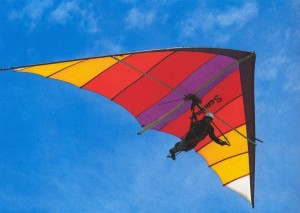How do Hang Gliders Work
Propelled upwards solely by hot air, hang gliders make engineless flight possible.
Hang gliders work by generating lift through both their body and wing shape, as well as exploiting the natural meteorological updrafts created in Earth’s atmosphere. Through these factors, hang gliders can use gravity as a source of propulsion, yet stay airborne for lengthy periods of time, extending their lift-to-drag ratio considerably. This relationship between the amount of lift the glider is capable of and the amount of drag inflicted on it by the atmosphere’s air molecules is key to its sustained flight, with the more metres of forward glide to every one metre of descent, the better.
When hang gliders were first invented, their heavy construction materials (wood and heavy metals) prevented pilots from achieving a good ratio. Today, however, super-lightweight carbon composite materials allow gliders to have significant glide ratios, usually over 15:1.
Construction consists of two main parts, the control frame and the wings. The wings (usually made from composite-framed fabric) are designed to generate as much lift as possible as air passes over them, as well as maintain pitch and yaw equilibrium when gliding.
 The control frame is attached to the centre of the wings and is triangular in shape; it provides a fixed platform for the pilot to be strapped to and shift within to alter course and altitude. Control is achieved by the pilot moving his weight fore or aft in opposition to the frame. Modern control frames feature docking points for navigation instrumentation such as GPS, as well as for other electronics such as radios and variometers (rate of climb/descent indicators).
The control frame is attached to the centre of the wings and is triangular in shape; it provides a fixed platform for the pilot to be strapped to and shift within to alter course and altitude. Control is achieved by the pilot moving his weight fore or aft in opposition to the frame. Modern control frames feature docking points for navigation instrumentation such as GPS, as well as for other electronics such as radios and variometers (rate of climb/descent indicators).
Articles on other blogs: Millennium Motor Glider Forum Powered Hang Gliding

